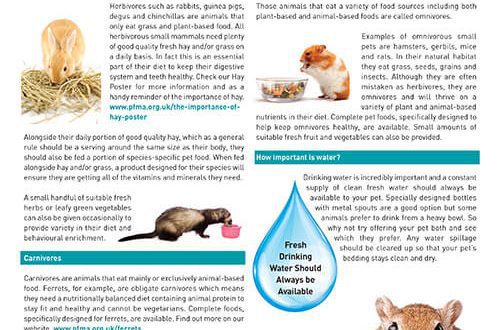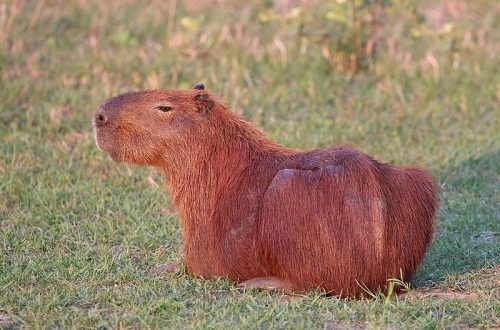
How many years do chinchillas live at home, the average life expectancy in captivity

Chinchillas among rodents are the main centenarians. Theoretically, the animal is able to reach the age of thirty years. In fact, in the wild, only rare individuals manage to overcome the twelfth year. How long chinchillas live at home depends on care. Statistics range from 8 to 25. On average, pets live up to 15-20 years.
How long a chinchilla lives depends primarily on its sensitivity and speed. By the age of 12, the rodent’s mobility decreases and it becomes more difficult for him to avoid predators, so only rare individuals can overcome this milestone.
Chinchillas live in a rocky region where food is scarce, water sources and shelters are scarce. Animals of both sexes live in the same colony and nothing prevents reproduction. A female chinchilla can breed 2-3 times a year, but the body is exhausted from such a rhythm, which affects the health of the individual.
Contents
How to prolong the life of a chinchilla
How many years chinchillas live at home depends on genetic data. It happens that an unscrupulous breeder sells litter from a union of close relatives, or from animals prone to diseases.
Genetic disorders may not show up outwardly. To insure against unpleasant discoveries, it is worth acquiring a rodent only in nurseries with a good reputation.
The life expectancy of a chinchilla grown in an apartment can be maximized if the animal is born healthy and is surrounded by the competent care of the owner.
Basic rules of care:
- to settle the animal in a spacious cage at least a meter wide, lined with sawdust;
- clean the home at least once a week;
- organize regular walks around the apartment under the supervision of the owner;
- make sure that the diet is balanced;
- maintain a suitable temperature regime;
- control the physical condition of the pet.

Chinchilla inspection
Some violations do not cause discomfort to the chinchilla and do not affect its behavior. Therefore, the owner should regularly examine the pet in order to recognize the problem in time and prevent advanced stages.
Chinchilla Health Signs:
- clean ears and eyes without discharge;
- dry nose without scab and mucus;
- the coat is without bald spots, the pile is dry, not stuck together, shiny, even;
- orange-colored teeth, the lower incisors are shorter than the upper and located behind them;
- the mouth is mostly closed, there is no active salivation;
- boluses are rice-shaped, moist, do not stick to the fur;
- in the discharge there is no mucus, blood clots, loose stools;
- the genitals are clean, dry and pink;
- the weight of an adult chinchilla is within the normal range, there are no sharp jumps in loss or gain;
- the behavior is stably active, the chinchilla does not show anxiety, apathy and aggression;
- breathing measured and even.
Changes in your pet’s appearance, weight, and behavior can be signs of serious illness. If the cause is unknown, a visit to the veterinarian is mandatory.
Risk Factors

Protecting a pet from injury and disease is easier than treating it. It is advisable for the owner to familiarize himself in advance with factors that can worsen the quality of life of a chinchilla and affect its duration.
Obesity
Domestic chinchilla moves less than her body requires, which affects the digestive system. For her, you should purchase special granulated food, hay and goodies.
The chinchilla tolerates hunger much better than overeating. In a rodent restricted in movement, an excess of high-calorie food causes obesity.
The animal will not refuse the offered nuts, fried food from the human table, a favorite treat, even if it is full. The owner must control the quantity and composition of the diet personally, without relying on the pet’s instincts.
In captivity, chinchillas can only live in a cage, or a special corral. Even a spacious showcase does not provide enough space for the realization of stored energy. Therefore, regular walks are very important for the health of the rodent. The chinchilla’s home must be equipped with a wheel and special toys that promote physical activity.

Digestive disorders
Diseases of the gastrointestinal tract can occur when animals consume low-quality or inappropriate food. You can recognize the problem by the characteristics of the feces, the behavior of the chinchilla and by probing the abdomen.
To avoid eating disorders, you need to make sure that the pet’s food is of high quality, without signs of rotting and mold.
There should be no harmful food in the reach of the chinchilla. New foods should be introduced into the diet gradually, allowing the body to adapt to them.
Injuries
Outside the cage, the pet can only be under the supervision of the owner. In the atmosphere of the apartment there are many things dangerous for the animal. It should not be allowed to gnaw on synthetic and toxic materials. Avoid contact with sharp and hot objects. Injuries are not uncommon due to pet games with electrical wires.
Smooth surfaces in the cage lead to damage to the feet. On the hind legs appear corns, ulcers and peeling. The floor of the chinchilla’s dwelling should be covered with sawdust of hardwoods; a piece of trunk can be placed in a cage.

Poisoning
Poisoning can be divided into two groups: acute and chronic. Symptoms of the former appear within hours of ingestion: vomiting, mucus discharge from the mouth and nose, weakness, and possible bloating and loose stools.
Chronic – refers to the systematic ingress of toxins into the animal’s body. Poisonous substances adversely affect the condition of the organs, but outwardly the symptoms may not appear.
Poison can penetrate surfaces treated with household chemicals. When washing the cage, it is desirable to do without chemicals. The pet must be protected from synthetic materials, coniferous wood and indoor flowers. Drinkers can only be filled with boiled or filtered water.
Exhaustion and stress
The lack of useful elements in the feed creates favorable conditions for the development of various diseases. Chinchillas need a balanced diet.
Pregnancy and caring for offspring greatly deplete the body of the female.
Therefore, during the period of gestation and feeding, the pet needs additional vitamins, and mating should not be carried out more than twice a year.
The lifespan of a chinchilla can be shortened by stress. The animal needs a calm environment for daytime sleep. The cage should not be placed near sources of loud sounds. An independent rodent should not be squeezed and held unnecessarily forcibly in the hands – this is unpleasant and harmful to the animal.

Colds and hyperthermia
Chinchilla is sensitive to climatic conditions. Drafts can give her a cold. The disease is accompanied by fever, a runny nose and complications in the form of bronchopneumonia are possible.
Video: how to save a chinchilla from the heat
If a chinchilla actively sheds hair in hot weather, its ears are hot and reddened – this is a sure sign that the temperature in the room needs to be lowered. The animal, covered with thick hair, does not tolerate heat well. Elevated room temperature can cause hyperthermia.
Signs of heat stroke:
- saliva becomes viscous and viscous;
- shortness of breath appears, breathing is speeded up;
- weakness and apathy;
- redness of the mucous membranes.
Chinchillas need to be protected from overheating and drafts. The cage should not be placed in direct sunlight, near heat sources and fans. The temperature in the room should be within 18-22 degrees, and humidity 40-65%.

Malocclusion
Chinchilla teeth grow throughout life. In nature, they grind on roughage and tree bark. At home, with a lack of suitable grinding materials, the upper and lower incisors begin to interfere with each other. Hooks can form on their surface, which injure the oral cavity and interfere with food intake. Less commonly, the tooth continues to grow inward.
A chinchilla with a malocclusion chooses small pieces from food, tries to crush the food. She has increased salivation, the jaw does not close completely. The animal often rubs its muzzle with its paws, as if brushing off something.
As a preventive measure, there must be special mineral stones and various branches in the chinchilla cage.

skin diseases
Hair loss, broken villi, thickening and dryness of the skin, purulent discharge and crusts indicate a disease. Most often, these symptoms hide a fungal infection.
Possible reasons:
- contact with an infected animal;
- unsanitary conditions in cells;
- high humidity in the room;
- lack of weekly access to a sandbox.
Prevention of the fungus is to prevent situations that contribute to the development of infections. It is in human power to make the life of a chinchilla flow happily ever after. Competent care for the health and comfort of the pet will significantly extend the years of the rodent.
How long does a chinchilla live at home
4 (80%) 28 votes





